A catalyst for change
How a city changed its fortunes
July 28, 2017
The seeds of an idea that were planted in the hope of reversing the Illawarra region’s flagging economic fortunes are beginning to sprout, with the potential to create real and lasting change.
"A bus driver?"
"Yep, he sat in front of me and said one day he'd like to be a bus driver." Nicholas Muldoon, co-founder of software startup Arijea is explaining the best answer he's ever heard to a question about what a prospective employee wanted to do in retirement.
"We spoke to this one guy who said he wanted to be a bus driver at the end of his career. I loved his answer about driving a bus to have the interaction with people," Nick says.
"That's the kind of person I'm looking for. We want them to be keen learners, curious and widely read. To make a startup work, we need generalists, not people who excel at one thing at the expense of all other."
Nick and his co-founder Dave Elkan, both born and raised in Sydney, recently returned from a few years in San Francisco to grow their company. They have joined the University of Wollongong's business accelerator, iAccelerate, which recently opened in a new $18.5 million building at UOW's Innovation Campus.
They don't have major investors but currently break even on sales of their software solutions for enterprises using Atlassian products, a large Australian tech company that is reportedly worth close to $5 billion. In the world of tech, that might seem counterintuitive. But for the Illawarra region, and people like Nick and Dave, being a little counterintuitive is going to be the way of the future if the shoots of economic renewal are to sprout as the region's traditional manufacturing-heavy base shrinks.
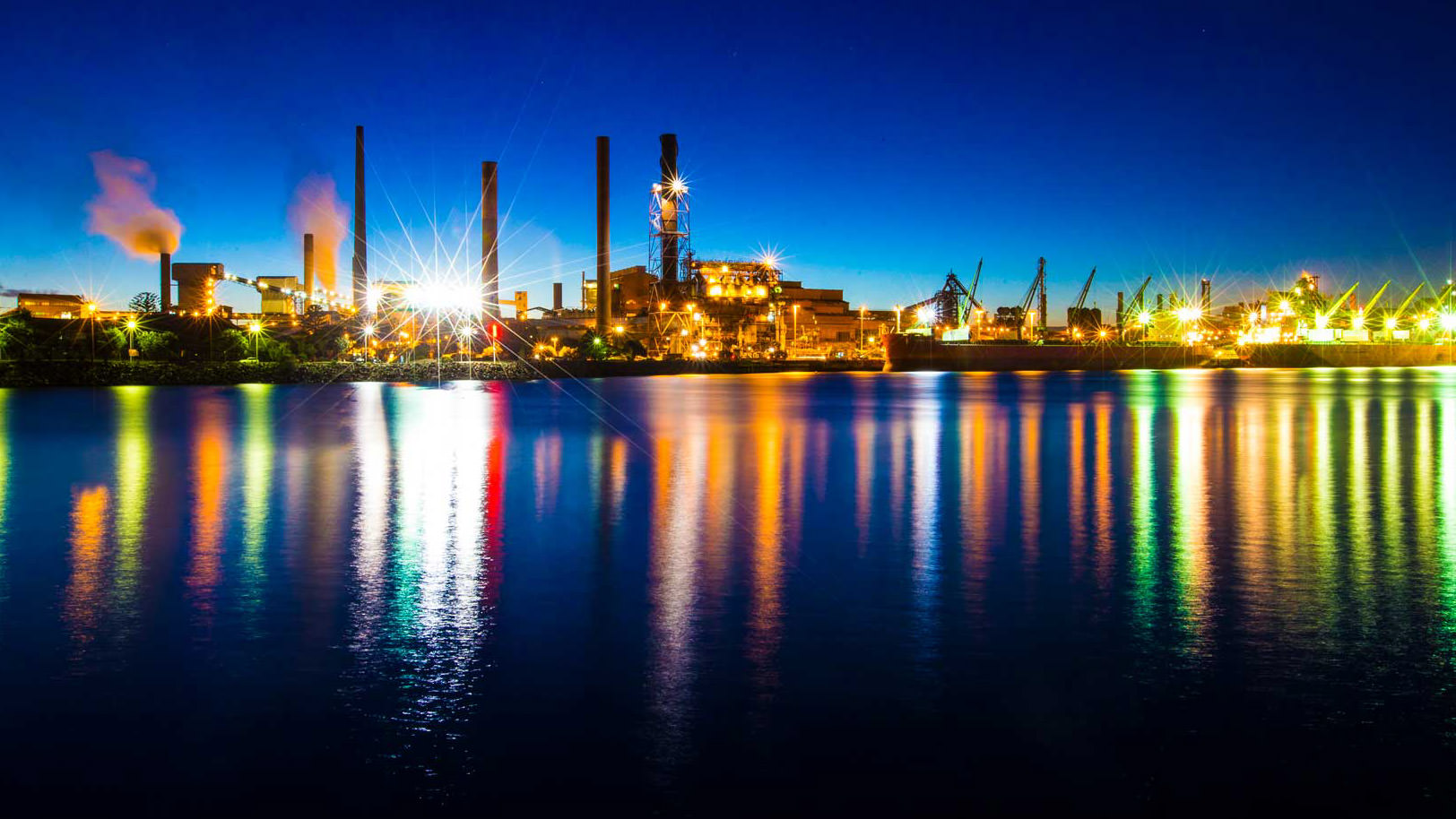
The Port Kembla Steelworks at night.
Tested by fire
Professor Alex Frino is UOW's Deputy Vice Chancellor (Global Strategy) and a Professor of Economics. He's also a Port Kembla native. "There are currently around 10,000 people looking for work in the Illawarra who can't find any," he says. "To visualise that, it's about half the capacity of WIN Stadium. It's a lot of people."
September jobs figures show the unemployment rate in the Illawarra at 6.5 per cent, compared to 5.6 per cent on a national level and 4.9 per cent for NSW, based on data from the Australian Bureau of Statistics. "For the Illawarra to enjoy the same employment rate as the rest of NSW we need something like 1,500 new jobs to be created for Illawarra residents," Professor Frino says.
"But this is the minimum needed simply to fill the current jobs shortage to get us somewhere near the NSW average." That's not as bad as the early to mid-2000s, when headline figures were more than 8 per cent. But it still puts the region behind the state average and the fact that new jobs are needed for the thousands of school leavers who will be opting to join the workforce and will be looking for jobs.
"With the big businesses in the Illawarra increasingly challenged - the steel industry, mining industry and so forth - it's difficult to see where these jobs are likely to come from," Professor Frino says. The headline unemployment also provides only half the picture and does not reflect jobs - or lack of - generated in the region.
"There are literally thousands of people who get up at dawn each morning to catch a train to Sydney and work outside the region," Professor Frino says. "I estimate that more than 10,000 people each day catch trains to Sydney for work. If they didn't, then the regional unemployment rate would be double what it is now.
Raw materials
Growing for close to four decades against the backdrop of a changing economic outlook was a hothouse of intellectual capacity and expertise at UOW, particularly in information technology, much of which is lost to the region as people sought employment elsewhere. What was needed was a way to harness that capacity and use it to provide the fertile soil to grow into the jobs of the future. A need that was put in stark contrast when more than 1000 steelworkers were laid off in 2011.
"There were lots of local conversations about what we needed to do including people being retrained and I could see that we needed to do something for the region to secure its economic future, particularly to nurture new small businesses," Professor Judy Raper, Deputy Vice-Chancellor (Research and Innovation) says.
Professor Raper takes off her round-rimmed glasses and places them on the table, as if to underline her point to follow: "Innovation is hard work. We've talked about it since I was a PhD student in the 1970s and again in the '90s but very little of those efforts have survived to this day.
"At the time, when I was a young engineer, the advice I was given was that if you couldn't get a job after graduating, you start your own business in your garage. It's got nothing to do with luck. What's needed is the people with the drive and the support in place to help ideas flourish."
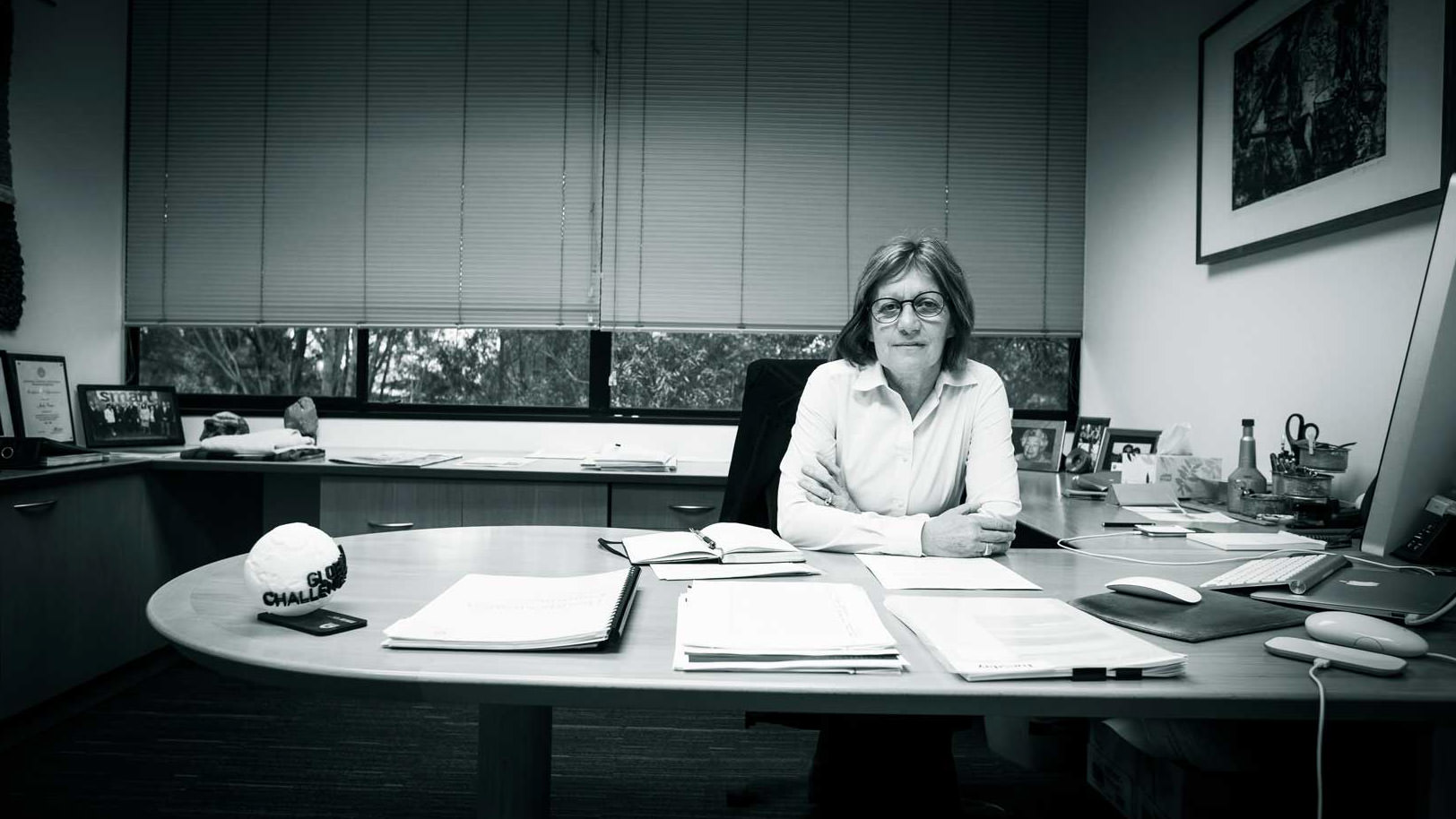
UOW Deputy Vice-Chancellor (Research and Innovation) Professor Judy Raper.
Inspiration for ways to water the seeds of innovation came from across the Pacific in a city with a past not dissimilar to Wollongong. Waterloo, a city of about 100,000 people and about 100 kilometres west of Toronto, has over two decades transformed itself from a manufacturing-heavy base to become Canada's 'Silicon Valley', launching more than 200 companies and generating CAN$500 million in revenue and investment through its Accelerator Centre.
"When we visited Waterloo we saw that they managed to change the region, to really introduce entrepreneurship and a good innovation ecosystem into the region. We came back and said, 'look, we could do that'," Professor Raper says. The methods used in its Accelerator Centre were co-opted and in 2011 iAccelerate was born, finding a home in the city centre where it opened its doors to the first intake of eight fledgling companies.
Since that landmark day, the University, under the guidance of the Research and Innovation Division, has spent close to $2 million resourcing, promoting and developing the program. "It was a futuristic concept to champion because it was breaking new ground for Australian universities," Professor Raper says. "We knew we had the staff with the passion to make it work here."
Immediately plans were in place for a dedicated building at UOW's Innovation Campus and State Government came to the party with funding. Ironically, it was the privatisation of Port Kembla, the beating heart connecting transport arteries with the muscles of industry, which provided the cash stimulus for the new building in the form of $16.5 million from the Restart NSW Illawarra Infrastructure Fund in 2013.
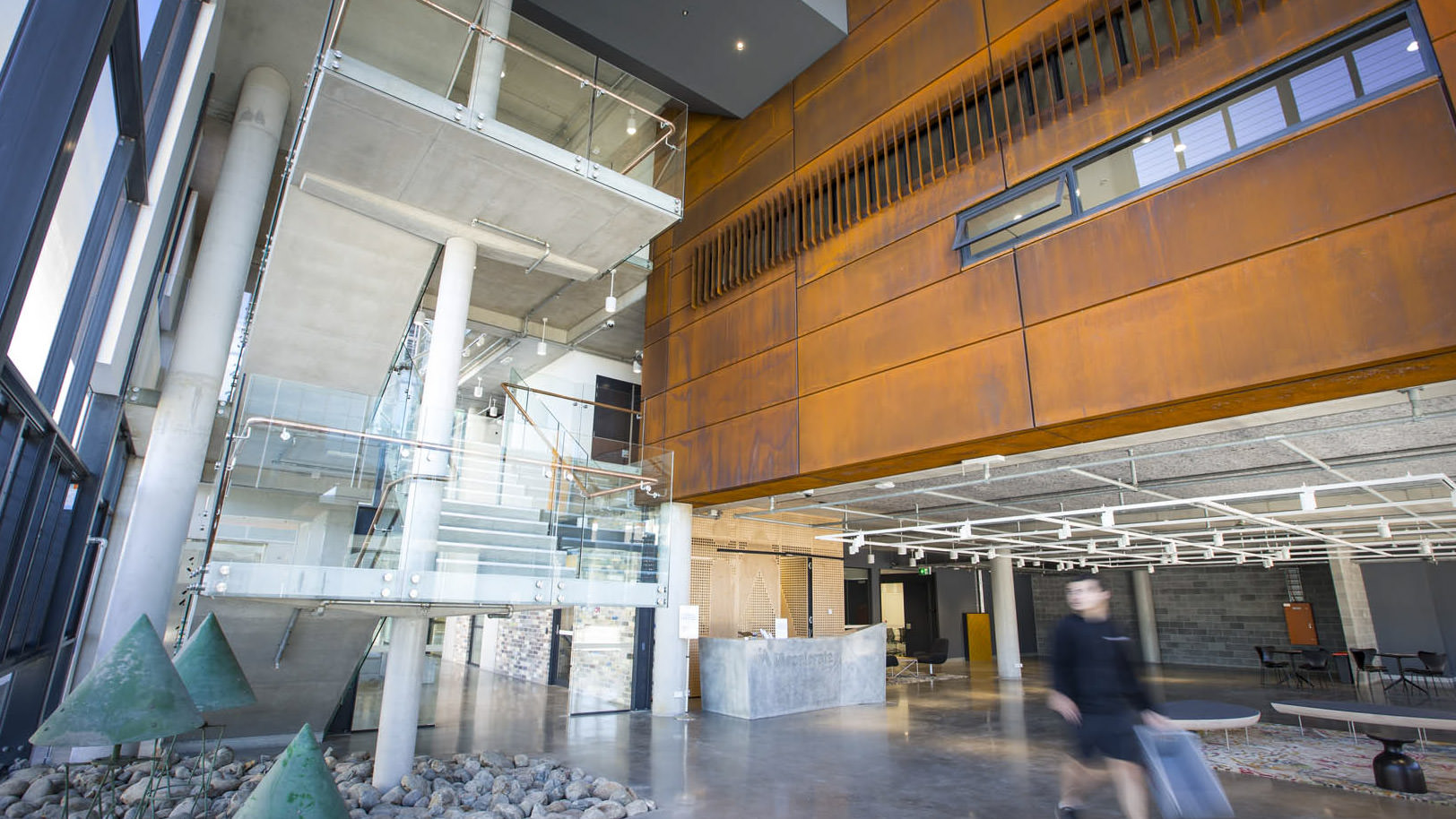
Iron will
The contraction of heavy industries does not mean not mean that heavy industry or steel doesn't have a place in the Illawarra. The University was born of metal and though the tranquil bushland campus setting is a world away from the blast furnaces of Port Kembla, the 41-year-old institution has steel in its DNA.
From the thousands of people who dug coal, worked the blast furnaces and loaded ships, among other works of hard labour, the people of the Illawarra have never shied away from heavy lifting. Human Geographer Professor Chris Gibson says it also points to innate qualities the people of this region possess: ingenuity, eccentricity, and grit.
"Buildings won't reinvent the region; people will. And because of the region's rich industrial history there are enormous reserves of ingenuity, eccentricity and grit to draw upon," he says. "From a project interviewing retired and ex-steelworkers in the region, we saw how these traits were demonstrated in the manner in which they translate and adapt manual skills, apply know-how and contribute to their families and communities well beyond the plant itself."
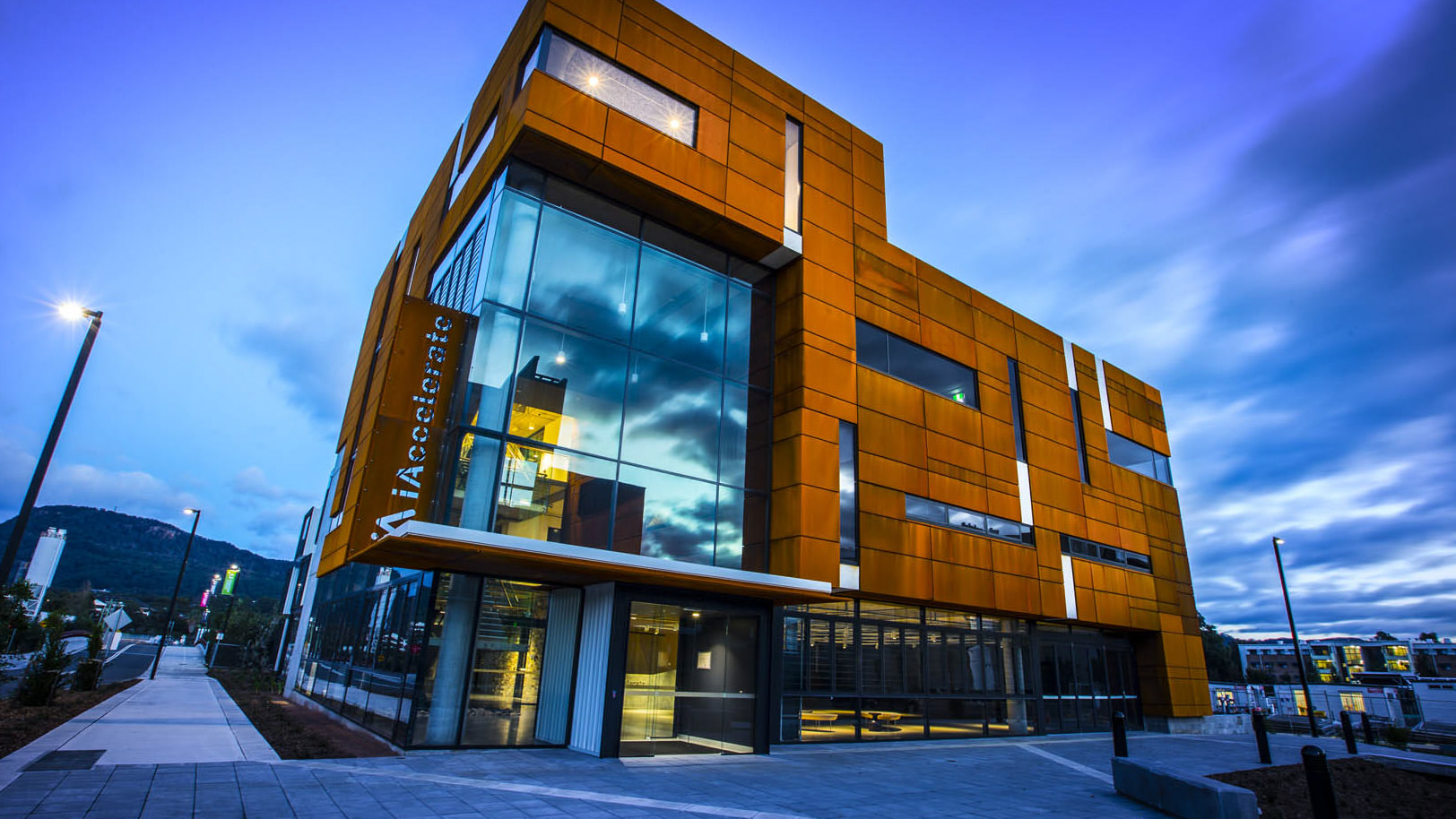
The researchers discovered a resilient people adept in making, fixing, maintaining, repairing, inventing: qualities that speak to the core of what entrepreneurially driven change is about.
UOW alumnus Adam Poole is a case study of that ability to turn adversity into opportunity. "Persistence beats resistance," he says, reflecting on his three-year journey from student with an idea to the CEO of technology startup Safety Compass. At just 23 years old, Adam had to reset his career plans. He completed his apprenticeship as a mechanic, but severely injured the ligaments in his left wrist at work and his doctor told him to find a new career.
The silver lining to Adam's dark cloud was that the injury inspired him to take up a career in health and safety, where he struck upon an idea that would cut through the mountainous paperwork involved with documenting safe work procedures and hazards. The Safety Compass app is based on augmented reality technology, which takes a live or real-world environment and enhances it with computer-generated elements such as sound, graphics or, in this case, linking thousands of pages of health and safety documentation to GPS map data.
"Safety Compass has gone from a product that I thought up at uni when I was sitting in the back of the class and not really paying attention to a multimillion-dollar local business with a head of sales and marketing and a project manager to help me run the business. Once you receive that funding offer in writing, it's pretty surreal."
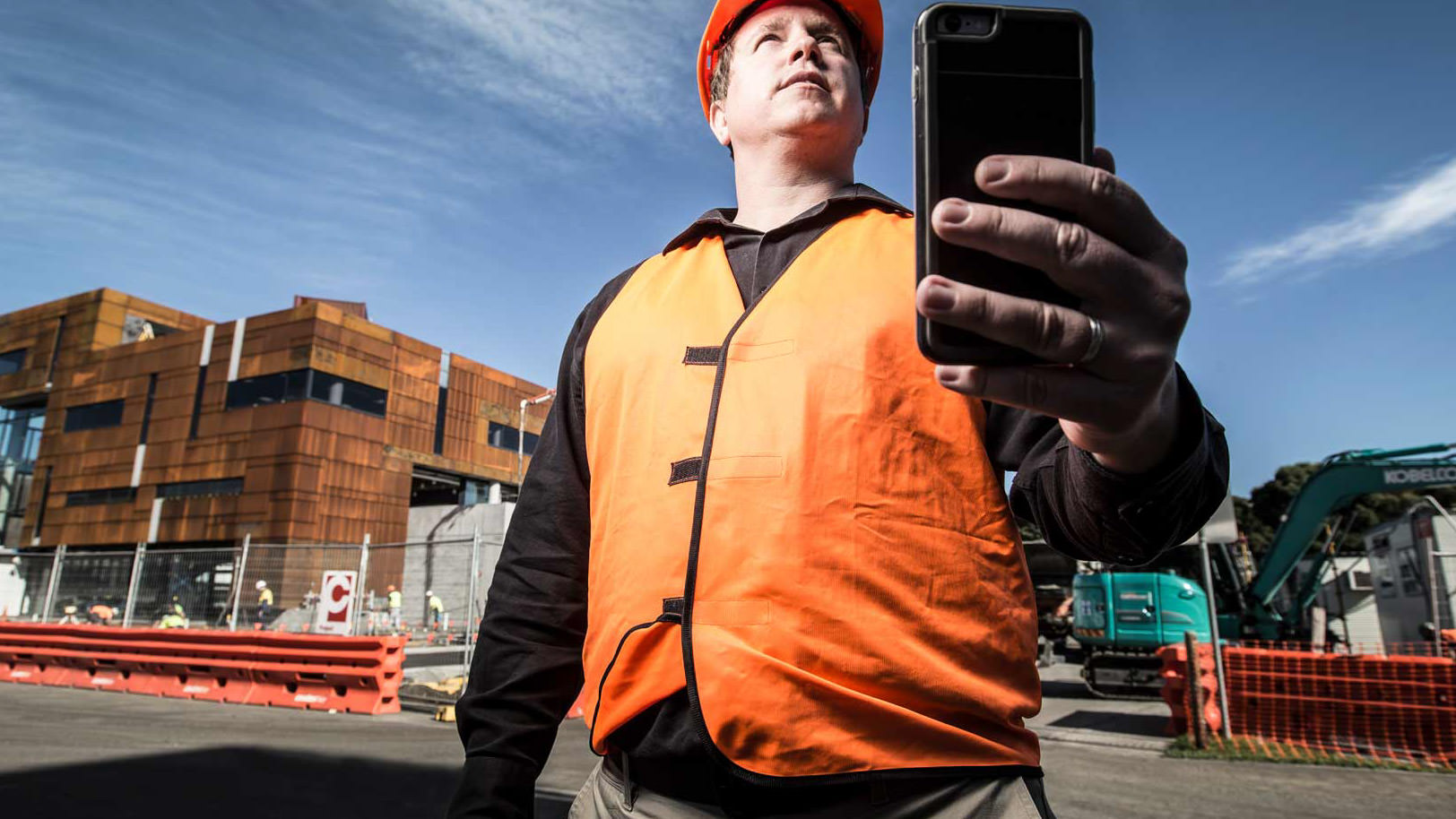
Adam Poole, the brains behind the Safety Campus app.
An innovation blast furnace
Examples like Safety Compass should become the rule and not the exception now that the state-of-the art iAccelerate Centre is open. Its suite of tried and tested programs provide the necessary mentoring and support to turn ideas in jobs. With its exposed steel facades and ship-inspired fit-out, the building stands as a striking symbol of change with a respectful nod to the region's industrial roots.
"What's entrepreneurship? How do you drive innovation for the future? That's a complex space. This facility is going to be critical within the Illawarra. In fact, within New South Wales, if the truth be told, in shaping the future. And because it's on a university campus, there's a chance to have student interns, to mentor people, to bring students in as part time staff. There are great numbers of people partway through their degrees with fantastic understanding of technology. So you can build the skill set you need very quickly."
While the students and university staff feed one end of the pipeline, the community has rightful place at the heart of driving and shaping their shared future. Rather than treating the new Centre with a 'build it and they will come' philosophy, newly appointed iAccelerate CEO Omar Khalifa envisions iAccelerate as the focal point of an innovation 'village' that brings people of all pursuits together to fuel the common cause of generating ideas with growth potential.
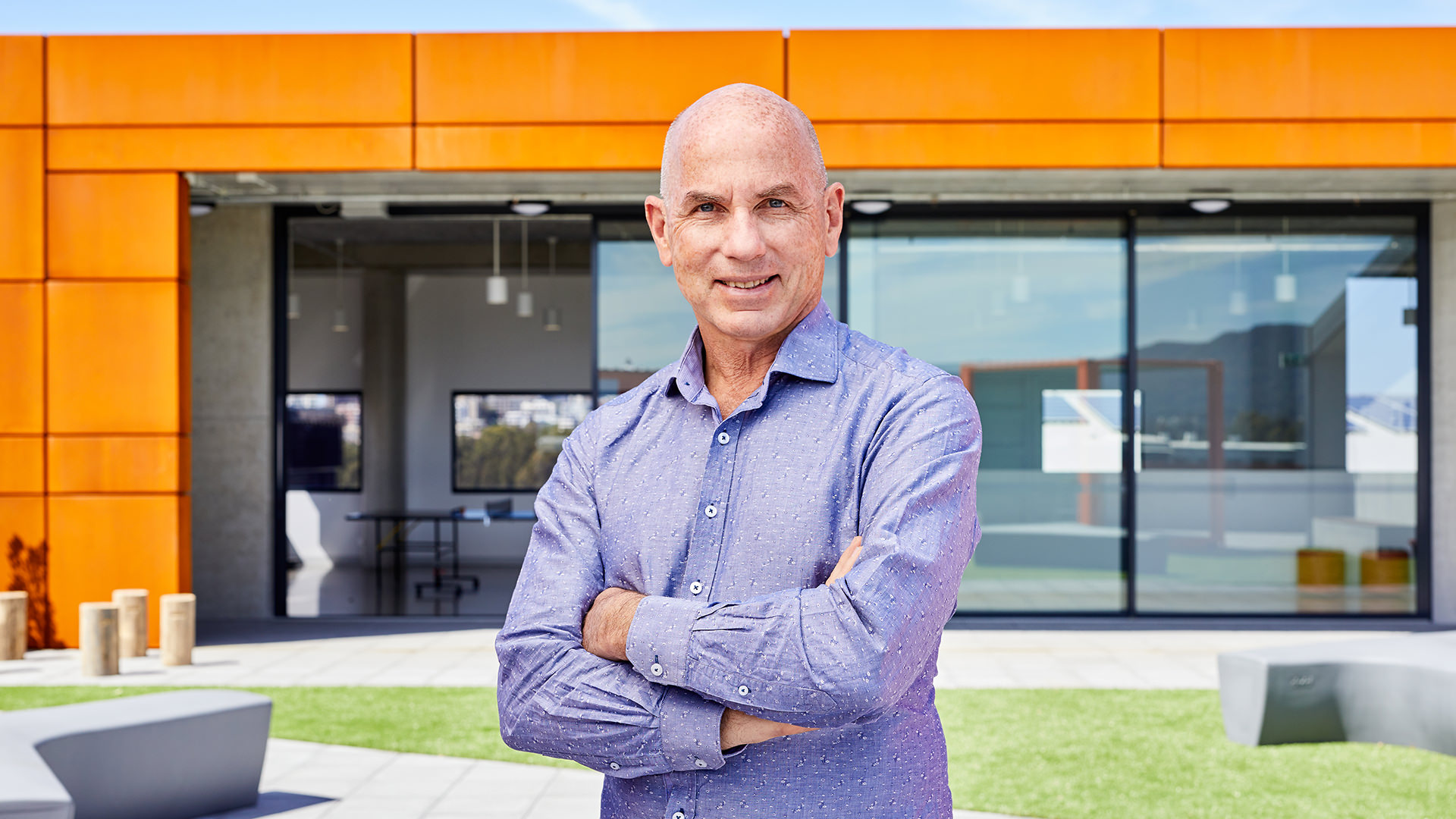
iAccelerate CEO Mr Omar Khalifa.
Despite the CEO title, you won't find Mr Khalifa ensconced in boardrooms and wearing suit and tie. The Egyptian-born US-raised entrepreneur is most often seen moving around the building in brightly coloured shirts that give an air of someone who's very much at home in the dynamic world of startup businesses.
"The building really inspires and raises expectations," he says. "I hear people say how impressive it is and that drives home the importance of what this initiative means for the region. "That said, supporting entrepreneurship and innovation is an iterative process. It's not case of set and forget and it all works. Every day we have to reflect on what works and what doesn't."
When Mr Khalifa talks about the Centre, he doesn't limit his definition to the several hundred square metres of floor space. He speaks about linkages with other innovation hubs to leverage funding and technology, as well as outreach to wider region to extend the concept of far and wide. "The building can't create. It's the people inside who still have to create and make a go of it. It's also not about high-tech or low-tech companies.
What will be critical for us is outreach to the Wollongong and wider community. We can't just say that we're open to the community and not make an effort. We have to be embedded in the community."
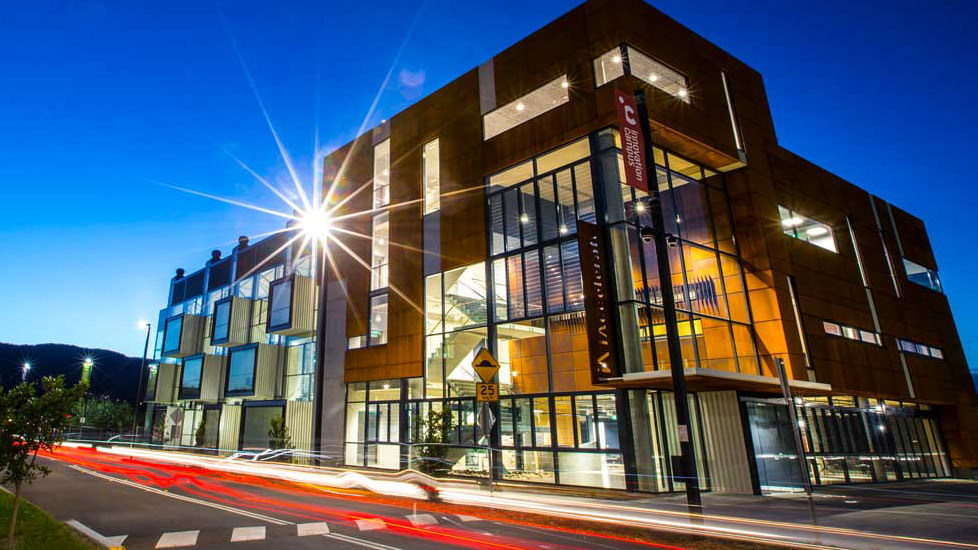
Continuous casting
In the corner of a four-desk office space at the iAccelerate Centre, six-month-old Logan sleeps while 3D printers hum in the background. The office's walls double as whiteboards and are covered in brainstorming efforts that help drive and shape the strategy behind startup Me3D. The company was founded by a group of friends and UOW alumni who struck upon the idea of manufacturing 3D printers that were affordable and easy to use with a focus on putting the technology into schools.
The three co-founders - Leanne Connelly, Matthew Connelly, and Fletcher Thompson - brought with them an experienced mix of skills in design, engineering, and economics. A sense of community, or a social licence, underpins their business.
"We saw the rise in popularity of 3D printing and wanted to be involved but by being more than just a hardware company," Leanne says. "We decided that it was important the way that we made this business a success and it wasn't just about making money, it was about doing it in a way that made us go home at the end of the day and feel good about ourselves and feel good about what we'd contributed."
They are part of iAccelerate's Advanced program, which takes growth-stage companies and provides more personalised support and a larger space to operate and move to the next level. Part of that strategy has involved enlisting the support of local disability support services Greenacres to help with production.
"In the past we'd worked with Australian Disabilities Enterprises in one form or another, and we thought they were an amazing resource and we could give them work that is inspiring and really different from the other work they've been doing." The company has in two years sold hundreds of printers to more than 80 schools and provides ongoing support for teachers.
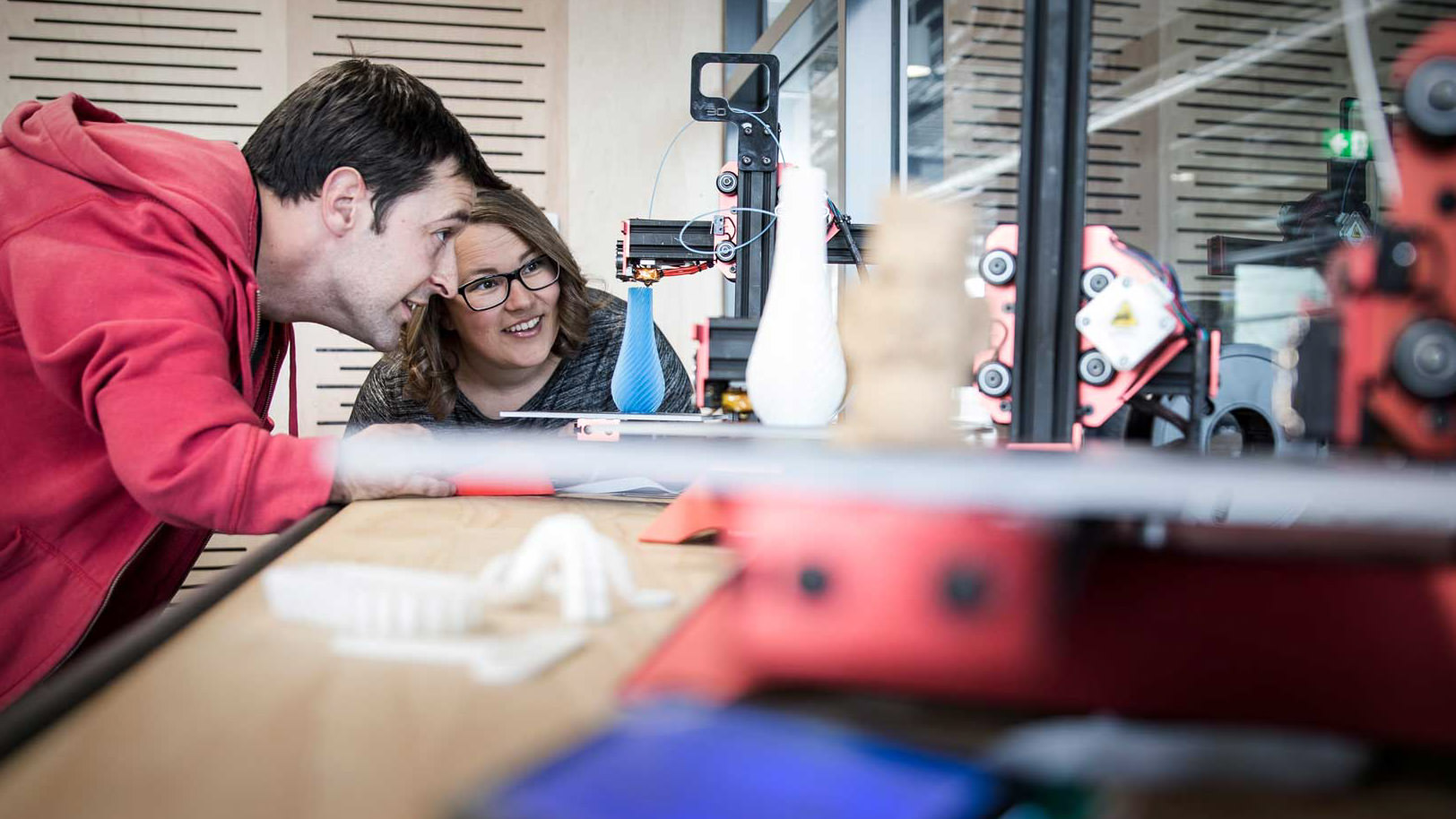
More recently, Matt says they've partnered with a group called AbilityMate who develop open-source 3D printable parts for people with disabilities. These are products that could be as simple as a new knob on a joystick or as complex as something that holds a straw to a particular cup. "Those aids give people the freedom to move about, to live on their own, and because they're parts that nobody else needs an exact copy of, 3D printing is the only way to do that," Matt says.
"A twenty-cent piece of plastic can change someone's life."
Change of shift
The opening of the iAccelerate Centre in July this year capped off five years of hard work and toil by those who birthed and nurtured the idea. The ambition is for the program to create 500 direct and 1000 indirect jobs by the end of the decade, attracting $70 million in investment to the regional and state economies.
Asked if it is a risky strategy, Professor Raper prefers to call it "calculated". "Similar things had been tried before and had not worked but this was a tried and tested model and we had to bring people with us," she says. "In the five years we've been going, we've had 63 companies start up, creating 143 jobs companies. We've had nine of them get new products launched.
"We've had six of them go international. That's something we can be very proud of and build on, now that we have space to cater for 280 entrepreneurs."
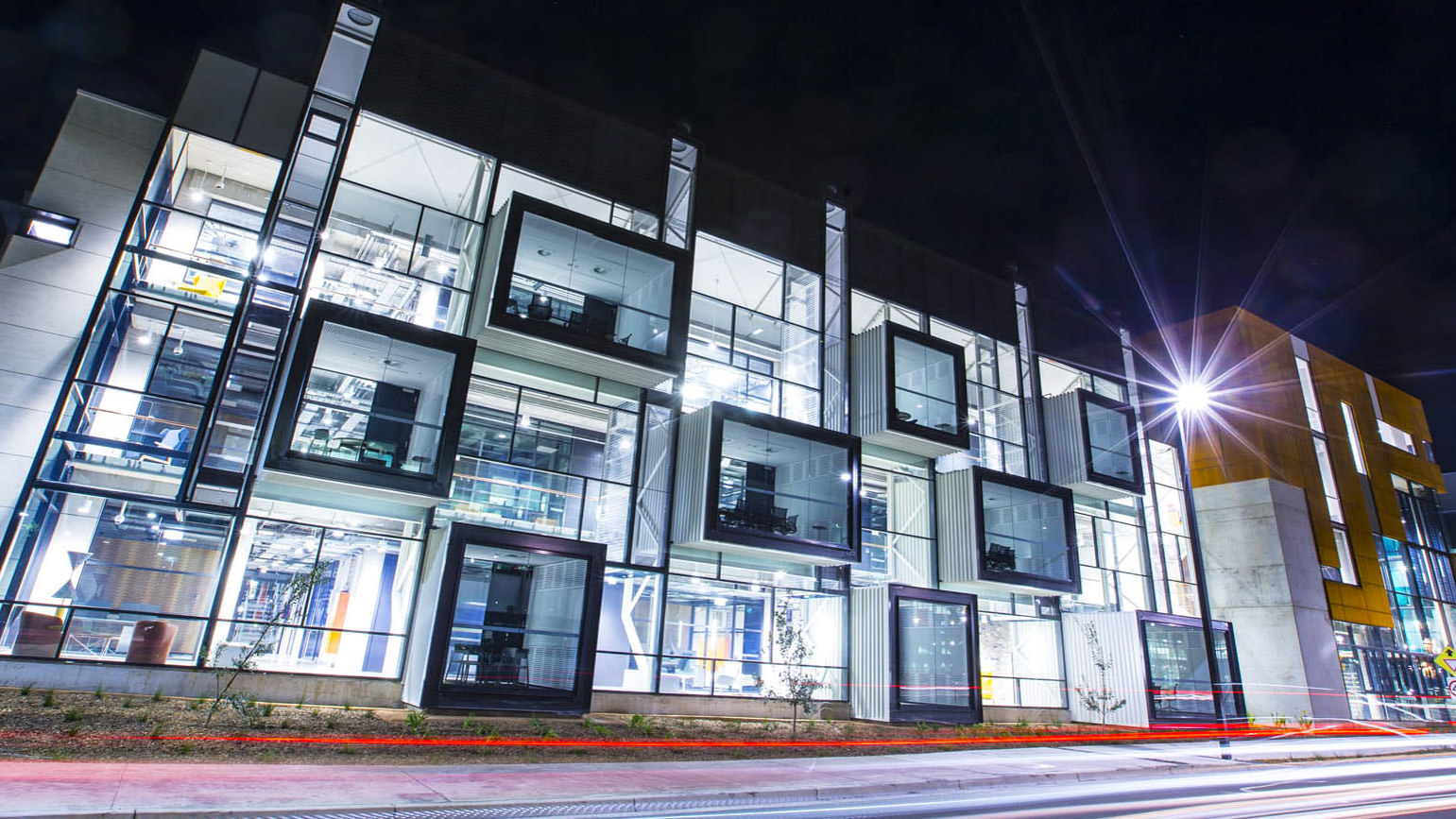
Professor Wellings says the University has always been clear about its mission to turn ideas into action. "This iAccelerate building is the cherry on the cake for that," he says. "It's a chance for us to not only do the great things we do in research and teaching, but also try and evidence that we've got the capacity to build new enterprises for the future.
In harmony with the lofty goal of doing great things, iAccelerate's tag line is 'Invent, Share, Change the World'. Nick from Arijea recently told the Illawarra Mercury that change is perhaps an inevitable part of the new economic reality of our world. The trick is how we deal with it.
"Steelmaking and industry in the Illawarra is slowing down, and that will decrease again over time - and maybe software and technology won't be any different," he says. "We want to build a community in the Illawarra that is focused on entrepreneurship and constantly looking to the next thing, so that when our children are looking for a job, there are opportunities for them."